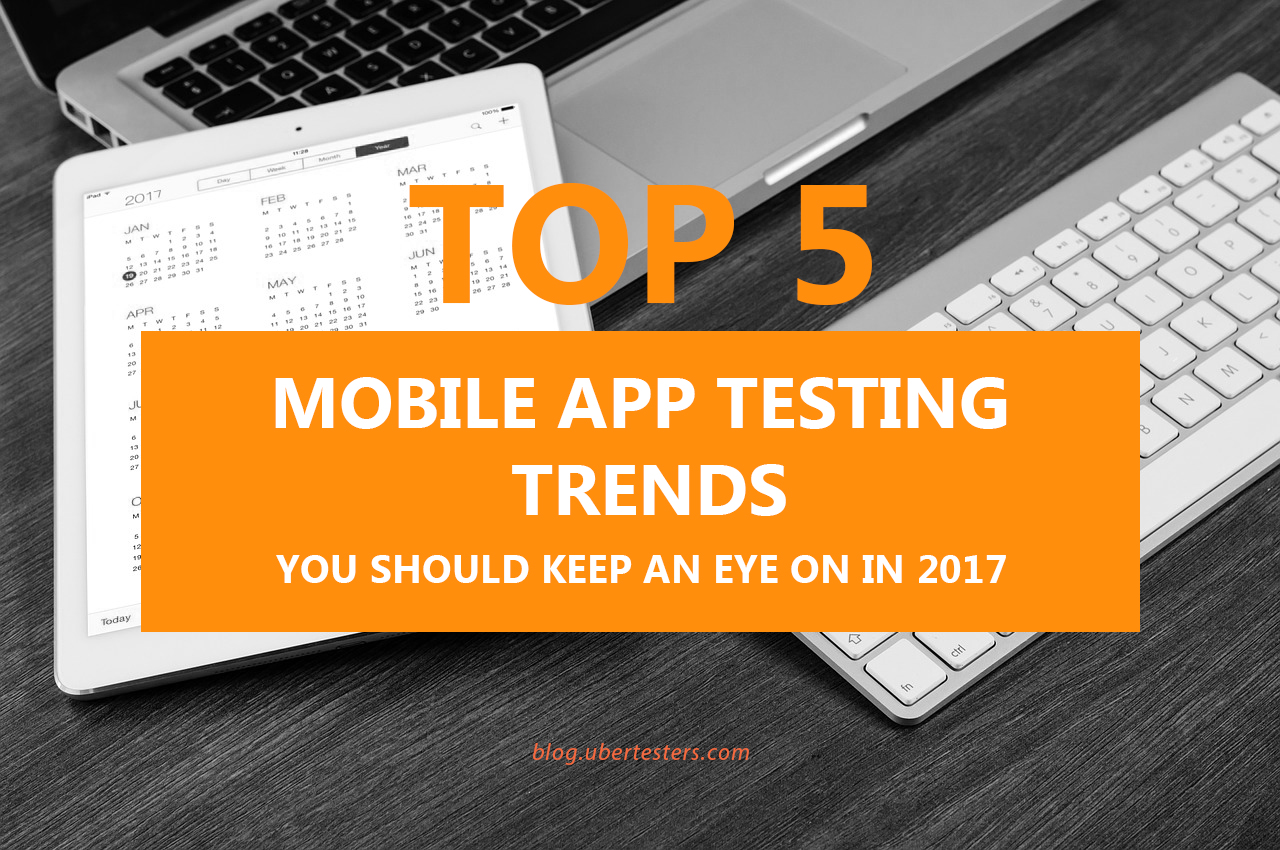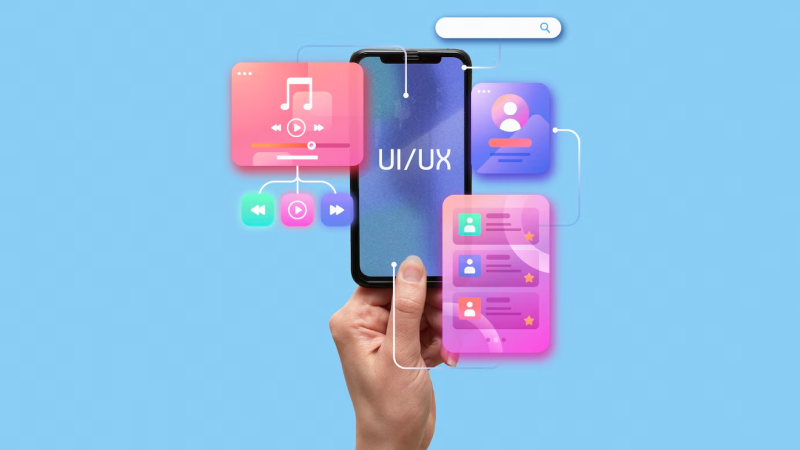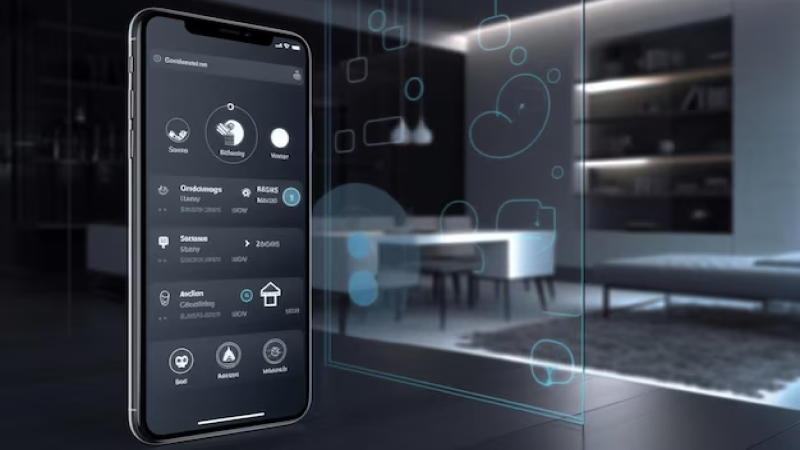Mobile App Testing Trends: Key Insights to Look for in 2025

According to Allied Market Research, the valuation of the mobile application market stood at $208.46 billion in 2022 and is estimated to reach $777.4 billion by 2032, growing at a CAGR of 14.4% from 2023 to 2032. This rapid expansion highlights the critical need for robust mobile app testing to ensure quality and user satisfaction. As client expectations evolve, staying ahead is essential. It includes currently trending technologies, Artificial Intelligence (AI) and Machine Learning (ML), transforming evaluation methodologies toward better efficiency and more accurate assessments. Besides, the proliferation of IoT devices and deployment of 5G networks is also compounding the challenges and opportunities in mobile verification. In 2025, this will drive testing trends to respond to the needs of a constantly plugged-in and performance-oriented client population. This article focuses on some key mobile app trends 2025 that shape the testing landscape, the challenges they introduce, and innovative QA trends to ensure app quality and user engagement.
Key Mobile App Testing Trends to Watch in 2025

The mobile app industry is growing rapidly, driving higher demand for innovation and quality user experience (UX). This growth emphasizes the need for advanced assessment methods to ensure that applications meet their expectations, perform well, and stay competitive.
AI-Driven Testing and Machine Learning in Apps
AI and ML can change digital software evaluation by automating complicated activities, predicting audience behavior, and personalizing since AI in app testing analyzes vast data to identify potential issues and proactively detect and resolve defects.
Testing for Superapps and Ecosystems
With the emergence of superapps, comprehensive QA across various functionalities and third-party integrations is needed. Seamless interoperability in these ecosystems will ensure a cohesive client experience.
Shift-Left Testing Approach
Shift-left testing integrates tests into the software development life cycle as early as possible in order to detect faults and speed the time-to-market. That is anticipatory quality control in which, after issues become evident, the work teams can be immediately on hand with action on them.
Crowd Testing and Real-world Testing
Real-world testing for mobile apps harnesses a diverse pool of testers through crowd-testing, offering valuable insights into actual usage scenarios. This approach helps to identify issues that might not be detected in controlled environments, thus enhancing the reliability of applications.
Enhanced Focus on User Experience Testing
By prioritizing user experience evaluation, mobile apps will meet their clientele’s expectations in terms of usability, performance, and accessibility. Continuous evaluation of UX is important for maintaining engagement and satisfaction.
5G and IoT Testing

The advent of 5G technology and IoT presents test challenges, such as ensuring seamless connectivity, low latency, and security across multiple interconnected devices.
AR/VR Testing and Immersive Apps
AR and VR applications require specialized QA to evaluate performance, user interaction, and hardware compatibility, ensuring immersive experiences are delivered effectively.
Green Testing for Sustainable Apps
With increasing environmental concerns, green testing focuses on developing energy-efficient products that employ the least resources, contributing to sustainability goals.
Blockchain
It enhances the security and transparency of mobile applications in the finance and healthcare sectors by using blockchain technology. Blockchain testing implementations assure data and transaction integrity.
Challenges Emerging from These Trends
Challenges in mobile app testing are increasing as they evolve. Emerging technologies, integration demands, and diverse audience expectations require testers to adapt.
- Complexity in testing superapps & ecosystems. With applications turning into superapps, the interdependency between different features and integrations with third-party services increases. Ensuring a seamless experience of many services will introduce many evaluation challenges.
- Adapting to AI and ML-driven features. Traditional evaluation methods are poorly adapted for intelligent and dynamic behaviors of AI and ML features. Testers need to adapt to ever-changing systems, which demand more sophisticated assessment methods that can anticipate and resolve unforeseen issues.
- Global user demands. Real-world testing ensures that it is inclusive and accessible across various markets. It means profound knowledge of regional peculiarities and tests on various devices, languages, and cultural contexts.
- IoT and 5G integration risks. Checking IoT and 5G apps shows performance variability from device capabilities, network latency, and connectivity. Ensuring the stability of software over these factors is quite a challenge.
- Sustainability pressures. The push for eco-friendly programs prolongs the timeline for evaluating constraints because of the new methodologies required for assessing energy-efficient and sustainable behaviors, further complicating traditional processes.
The Role of Crowd Testing in Addressing These Challenges

Crowd testing plays an important role in the growing challenges of mobile app evaluation as it provides real-world insights and scales assessment efforts across diverse environments and usage scenarios.
- Scaling real-world testing. It provides a diversified set of devices, networks, and environment access, critical for checking complex systems, such as superapps and IoT integrations. This approach addresses the overall challenge of ensuring the same product performs consistently across different user contexts, including 5G network testing for apps.
- Global user insights. With crowd testing, cultural, linguistic, and accessibility considerations are tested by a pool of testers worldwide. It will ensure that various software fits different audiences and meets local regulations and preferences, aligning with user-centric testing approaches.
- Efficiency in testing advanced technologies. Remote testing teams offer the flexibility to test state-of-the-art technologies such as AR/VR, 5G, and immersive apps. Their adaptability in various environments ensures these technologies perform as expected across client scenarios and hardware configurations.
- Filling gaps left by automation. While automation is great for repetitive tasks, this type of testing uncovers critical usability issues and exploratory feedback that automated scripts may miss, thus building a better user experience.
- Sustainability through efficiency. With distributed crowd testing, resource utilization, hardware requirements, and power consumption all remain minimal since extensive in-house lab setups become less essential. This truly “green” friendly method contributes to a lower carbon footprint for a mobile application with the greatest impact.
Best Practices to Navigate 2025’s Testing Landscape
Best practices for QA in 2025 will be essential for navigating the evolving challenges in mobile app testing. Assessment teams must adopt strategies incorporating advanced technologies and real-world insights to stay ahead.
- Adopt a hybrid approach. Combine crowd testing with automation to have repetitive tasks and complex real-life scenarios taken care of in a single shot, ensuring thorough assessments and the faster detection of issues.
- Invest in security protocols. Prioritize data protection in environments by implementing robust security measures to safeguard sensitive information and address confidentiality concerns.
- Build collaborative teams. Encourage effective teamwork among developers, testers, and stakeholders for integrated QA that supports project objectives and improves overall communication.
- Leverage crowd testing for early and continuous feedback. Adopt a shift-left approach by involving crowd testers early in the development cycle to catch and fix issues faster, improving overall product quality and user satisfaction.
- Measure and optimize. Continuously evaluate and improve the assessment methodologies to align them with evolving app demands, trends, and emerging technologies, enhancing efficiency and effectiveness over time.
Final Thoughts
The evolving mobile app trends 2025 highlight advancements like AI-driven testing, superapps, 5G integration, and sustainability. These innovations introduce challenges, from complexity to global inclusivity to adapting to upcoming technologies. It indicates the need to keep up with innovative QA trends. Crowd testing becomes vital due to scalability, real-world insights, and flexibility in managing the required needs. Besides, early feedback mechanisms, user-centric checks, and hybrid approaches while implementing will certainly make QA teams aware of whether the software will meet the expectations of their audience and standards of quality. Crowd testing is more than just a method; it’s your ace in the hole for perfecting user experiences. Whether you’re developing immersive AR apps or ensuring seamless online transactions, we’ve got you covered. Get in touch with us today and see how we can help you deliver smoother, more reliable, and user-centric applications in 2025 and beyond!

